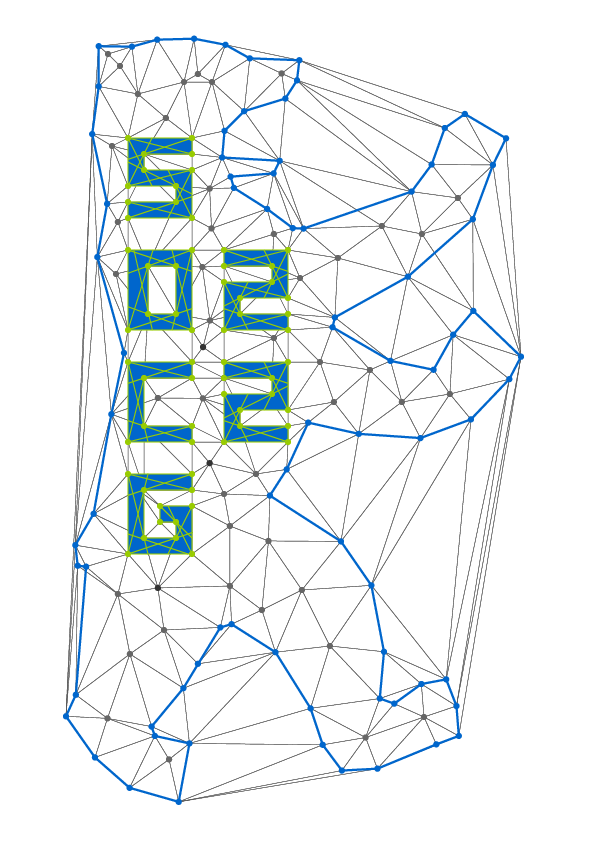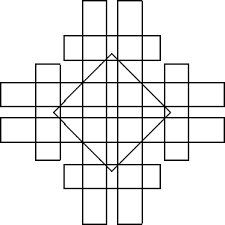
SoCG 2022
7–10 June 2022 in Berlin, Germany



The 38th International Symposium on Computational Geometry (SoCG 2022) is planned to be held in Berlin, Germany, June 7–10, 2022, as part of the Computational Geometry (CG) Week. We invite submissions of high quality that describe original research on computational problems in a geometric setting. Topics of interest include, but are not limited to:
Submissions must be formatted in accordance with the LIPIcs proceedings guidelines. Authors must use the LaTeX class file socg-lipics-v2021.cls, which is a wrapper around the standard LIPIcs class. The LIPIcs style and instructions are available here; the socg-lipics-v2021.cls class file is available here, and instructions on how to use it are available here. Submissions must not exceed 500 lines, excluding front matter (title, authors, and affiliations), references, and a clearly marked appendix (further described below), but including all other lines (in abstract, algorithms, tables, captions, etc.). The class files provide line counting which should be accurate in most cases. Authors should refrain from putting excessive amounts of text in parts in which lines are not counted automatically. If authors need constructs that contain uncounted lines of text, they should compensate for this by reducing the final line count accordingly. It is the sole responsibility of the authors to not exceed 500 lines even if some lines are not counted automatically.
Papers should be submitted in the form of an extended abstract, which begins with the title of the paper, each author's name and affiliation, as well as a short abstract. This should be followed by the main body of the paper that begins with a precise statement of the problem considered, a succinct summary of the results obtained (emphasizing the significance, novelty, and potential impact of the research), and a clear comparison with related work. The remainder of the extended abstract should provide sufficient details to allow the program committee to evaluate the validity, quality, and relevance of the contribution. Clarity of presentation is very important; the entire extended abstract should be written carefully, taking into consideration that it will be read and evaluated by both experts and non-experts, often under tight time constraints.
All details needed to verify the results must be provided. Supporting materials, including proofs of theoretical claims and experimental details, that do not fit in the 500-line limit should be given in an appendix. If more appropriate, the full version may be given as the appendix. In both cases, however, the authors should include in the main part specific pointers to the relevant locations in the appendix. The appendix will be read by the program committee members and subreviewers at their discretion and will not be published as part of the proceedings. Thus, the paper without the appendix should be able to stand on its own. Experimental and implementation results (independent of paper type) must be reproducible and verifiable. Authors of all types of papers are encouraged to put accompanying software and relevant data, if there are any, in a repository accessible to the reviewers. Authors are asked to indicate which of the supporting materials will remain publicly available if their papers are accepted.
Results previously published or accepted for publication in the proceedings of another conference cannot be submitted. Simultaneous submissions of the results to another conference with published proceedings are not allowed. Exempted are workshops and conferences without formal proceedings, but possibly with handouts containing short abstracts. In particular, submissions of papers that have appeared or will be submitted to EuroCG are allowed, since EuroCG does not publish formal proceedings, while submissions of papers that have appeared in CCCG are not allowed. Results that have already been accepted (with or without revision) for publication in a journal at the time of their submission to the symposium are not allowed. A paper submitted to a journal but not yet accepted for publication can be submitted to the symposium. In such cases, the authors must mention this on the front page of the submission and clearly identify the status of the journal submission at the date of the full paper submission deadline.
Submissions deviating from the above guidelines risk being rejected without further consideration.
When writing or evaluating a SoCG paper, it is important to keep in mind that there are different types of contributions, each with its own strengths. To ensure that a submission is evaluated on its own merits, authors will need to identify the main strengths of their submission, as captured by four possible paper types. PC members and external reviewers will be asked to take into account these paper types together with their associated evaluation criteria when they evaluate a paper. There are no quotas for the paper types and submissions can be labeled with more than one paper type at the time of submission.
The guidelines are available here.
Final proceedings versions of accepted papers must respect the same formatting constraints as the submissions (LIPIcs proceedings format with socg-lipics-v2021; 500-line limit, excluding front matter and references), but must not comprise any appendix. If any supporting material (including complete proofs of theoretical claims and experimental details) does not fit in the specified limit, then the full version of the paper containing this information must be referenced in the conference version and made available at a public repository, such as arXiv, by the time the final version is submitted. Where applicable, we encourage the authors to make accompanying software and/or data publicly accessible, with proper references in the paper.
An author of each accepted paper will be expected to attend the symposium and present the paper (approximately 20 minutes). Given the developing COVID-19 pandemic, the format of both attendance and presentation will be clarified closer to the event. Awards will be given for the best paper and for the best student presentation. Authors of a selection of papers from the symposium will be invited to submit extended versions of their papers to special issues of Discrete & Computational Geometry and Journal of Computational Geometry. As in the previous years, the authors of the best paper will be invited to submit an extended version of their paper to Journal of the ACM.
SoCG is dedicated to providing an environment that is free from harassment, bullying, discrimination, and retaliation for all participants. All attendees, speakers, sponsors, and volunteers at our conference are required to agree with the CG Week code of conduct.
If an author has a conflict of such nature with a potential reviewer, and the author has sufficient grounds to believe that the review would be negatively biased, then the author is asked to declare this conflict by contacting a SoCG advocate who will treat any supporting information confidentially. For a list of SoCG advocates with contact information, please refer to https://computational-geometry.org/codeofconduct.html.